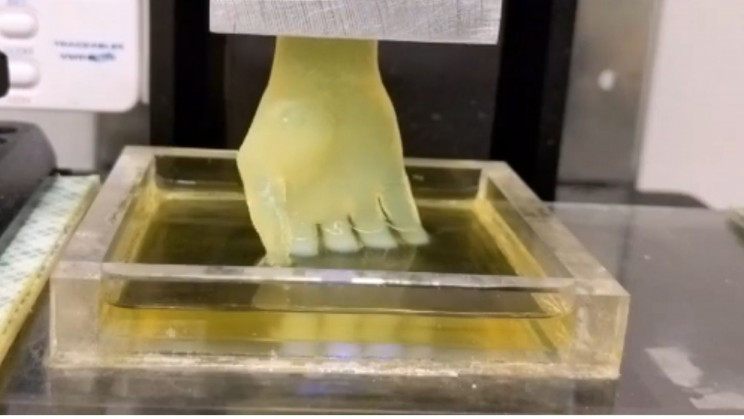Double Diabetes: A Growing Problem Requiring Solutions was studied/reported by Djordje S. Popovic and Nikolaos Papanas in the Experimental and Clinical Endocrinology & Diabetes Journal, 26 February 2021.
 ABSTRACT: The growing proportion of type 1 diabetes mellitus (T1DM) patients with clinical features of insulin resistance (IR) has led to the description of a distinctive T1DM subgroup, still unrecognized by current guidelines, called double diabetes, assumingly associated with poorer metabolic phenotype and increased risk of micro- and macrovascular complications. The main goal of identifying double diabetes, estimated to be present in up to half of T1DM patients, is timely implementation of appropriate therapeutic interventions to reduce the increased risk of chronic complications and other adverse metabolic traits associated with this condition.
ABSTRACT: The growing proportion of type 1 diabetes mellitus (T1DM) patients with clinical features of insulin resistance (IR) has led to the description of a distinctive T1DM subgroup, still unrecognized by current guidelines, called double diabetes, assumingly associated with poorer metabolic phenotype and increased risk of micro- and macrovascular complications. The main goal of identifying double diabetes, estimated to be present in up to half of T1DM patients, is timely implementation of appropriate therapeutic interventions to reduce the increased risk of chronic complications and other adverse metabolic traits associated with this condition.
Estimated glucose disposal rate may prove the most reliable marker of double diabetes. In addition to general measures (diet, physical activity, antihypertensive, and lipid-lowering medications, etc.) and development of new insulin preparations with more hepatic action, double diabetes patients may derive more benefit from agents developed for T2DM. Indeed, such potentially promising agents include glucagon-like peptide-1 receptor agonists, sodium-glucose contrasporter-2 inhibitors, and their combination. We are now awaiting long-term trials assessing metabolic and vascular benefits of these medications in double diabetes.
Reference: PMID: 33636739, DOI: 10.1055/a-1392-0590
 Another great resource: ConnectT1D, connecting the T1D community … “Explore Canadian diabetes research and learn about how our community is reshaping what it means to live with T1D.” It’s filled with lots of information and research, including studies on T1D and exercise, technology, etc.
Another great resource: ConnectT1D, connecting the T1D community … “Explore Canadian diabetes research and learn about how our community is reshaping what it means to live with T1D.” It’s filled with lots of information and research, including studies on T1D and exercise, technology, etc.
You can set up an account to get the latest: Connect1D Canada
ENDSULIN is overcoming the limitations of today’s taxing diabetes treatments with a patented gene construct and simple process that re-engineers part of the liver, allowing it to produce and regulate insulin on its own.
 Gene therapy is one of the most promising emerging biotechnologies, because it can cure patients for a prolonged period of time. ENDSULIN has developed a patented DNA sequence called glucose-inducible regulatory element (GIRE). It responds to glucose concentrations in the blood, then provides regulated release of insulin to accomplish blood-glucose control. GIRE is packaged inside adeno-associated virus (AAV), which is not known to cause disease, but can still transfer the gene to the liver cells. AAV8 has a long-term safety record, and the FDA has approved more than 100 AAV trials.
Gene therapy is one of the most promising emerging biotechnologies, because it can cure patients for a prolonged period of time. ENDSULIN has developed a patented DNA sequence called glucose-inducible regulatory element (GIRE). It responds to glucose concentrations in the blood, then provides regulated release of insulin to accomplish blood-glucose control. GIRE is packaged inside adeno-associated virus (AAV), which is not known to cause disease, but can still transfer the gene to the liver cells. AAV8 has a long-term safety record, and the FDA has approved more than 100 AAV trials.
A major advantage of hepatocytes is that they can effectively produce peptides, including insulin. The liver already has regulatory elements that, with the addition of our unique GIRE, assist in maintaining normal glucose levels. The genetically altered hepatocytes mimic the action of a normal pancreas. Because hepatocytes don’t carry proteins on their surface (which are the target of the autoimmune disease that causes diabetes), there is no risk the autoimmune system will destroy the genetically altered hepatocytes.
ENDSULIN has begun a pilot study in naturally diabetic companion dogs. We are the only group in the world testing gene therapy in large mammals for diabetes with an autoimmune disease. Because of the similarities in dog and human diabetes, successful results in pets should be a strong indicator of how to optimize the human treatment.
Read more: Endsulin
eGlycemic Management System® from Glytec fosters safer, less costly care for insulin-requiring patients with and without diabetes.
 eGlycemic Management System®, or eGMS®, is a comprehensive, modularized technology solution proven to address the complex processes, risks and challenges surrounding effective and efficient glycemic control. eGMS® centers on Glucommander™, the only patented and FDA-cleared software-as-medical-device (SaMD) platform able to support intravenous and subcutaneous insulin dosing (and transitions between) for patients with and without diabetes — adult and pediatric alike — across the entire continuum of care.
eGlycemic Management System®, or eGMS®, is a comprehensive, modularized technology solution proven to address the complex processes, risks and challenges surrounding effective and efficient glycemic control. eGMS® centers on Glucommander™, the only patented and FDA-cleared software-as-medical-device (SaMD) platform able to support intravenous and subcutaneous insulin dosing (and transitions between) for patients with and without diabetes — adult and pediatric alike — across the entire continuum of care.
Glucommander™ utilizes evidence-based multivariate algorithms to provide care teams with computer-guided dosing recommendations that continuously recalculate and dynamically adjust to each individual patient’s blood glucose trends, insulin sensitivities and response to therapy. Glucommander™ is comprised of multiple modules:
-
- Glucommander™ IV for intravenous insulin dosing of adult patients.
- Glucommander™ Pediatrics IV for intravenous insulin dosing of pediatric patients (age >2 years).
- Glucommander™ SubQ for subcutaneous insulin dosing with options for basal/bolus+correction, basal+correction, and basal/insulin:carb ratio+correction. (Glucommander™ SubQ is able to easily accommodate use of carbohydrate counting as the basis for determining a patient’s subcutaneous meal bolus insulin dose.)
- Glucommander™ Transition to SubQ for transitions from intravenous to subcutaneous insulin dosing of adult and pediatric patients.
- Glucommander™ Outpatient for subcutaneous insulin dosing of adult patients in an ambulatory setting.
Read more: Glytec Insulin Management Software
High-Speed 3D Printing Method Takes Us One Step Closer to Printing Organs reported by Loukia Papadopoulos for InterestingEngineering.com, 7 March 2021. The new method uses stereolithography and jelly-like materials known as hydrogels to speed up the process.
 3D printing technologies have evolved at an unbelievable pace resulting in everything from 3D printed meat, to 3D printed houses to even 3D printed guns. Many 3D printers have boasted that they may be the future of printed organs but we haven’t gotten there just yet. Now, a new study out of the University of Buffalo may just be the key to 3D printed organs.
3D printing technologies have evolved at an unbelievable pace resulting in everything from 3D printed meat, to 3D printed houses to even 3D printed guns. Many 3D printers have boasted that they may be the future of printed organs but we haven’t gotten there just yet. Now, a new study out of the University of Buffalo may just be the key to 3D printed organs.
“The technology we’ve developed is 10-50 times faster than the industry standard, and it works with large sample sizes that have been very difficult to achieve previously,” said in a statement the study’s co-lead author Ruogang Zhao, Ph.D., associate professor of biomedical engineering. The work was supported with funding from the National Institute of Biomedical Imaging and Bioengineering of the National Institutes of Health. The UB School of Engineering and Applied Sciences and the Jacobs School of Medicine and Biomedical Sciences provided additional funding. The study was published in the journal Advanced Healthcare Materials.
The researchers released a seven-second video that is sped up from 19 minutes and that shows a full hand being printed at once. This process would normally require at least six hours using conventional 3D printing methods. The new method is called stereolithography and uses jelly-like materials known as hydrogels.
Watch Out … here come the 3D printed pancreases!!!
Read more: High-Speed 3D Printing Method Takes Us One Step Closer to Printing Organs
Just to lighten the seriousness of research and tech, 29 Things Only a Person with Diabetes Would Understand was written by Lizmari Collazo for Healthline.com, 16 January 2021.
Managing diabetes is a full-time job, but with a little bit of humor (and plenty of supplies), you can take it all in stride. Here are 29 things only a person living with diabetes would understand. Like … these 2, plus 27 more!


Read all 29: 29 Things Only a Person with Diabetes Would Understand


It kills me how I always end up with more lancets than test strips. I change my lancet perhaps 19 out of 20 times, yet I have three times the number of lancets as I do test strips. If I even got 1/2 the test strips as I got lancets, I would open an international supply house called test strips is us.